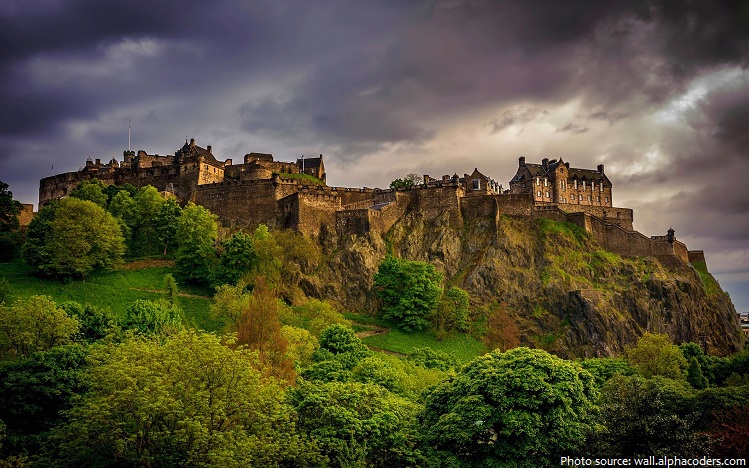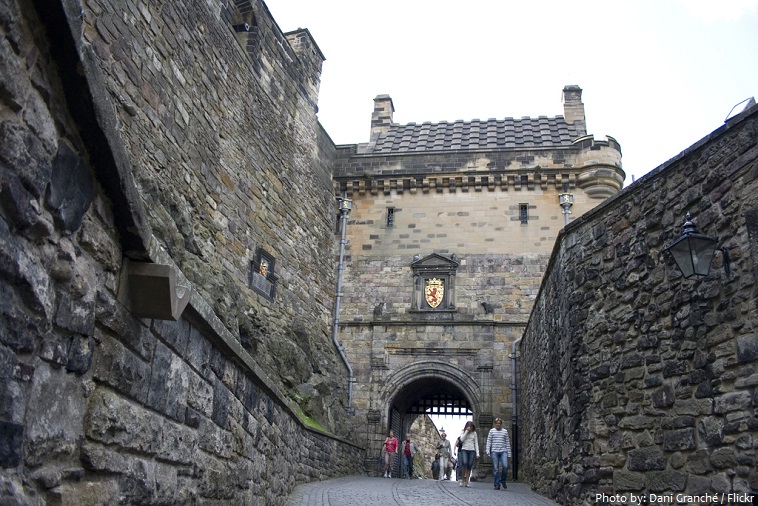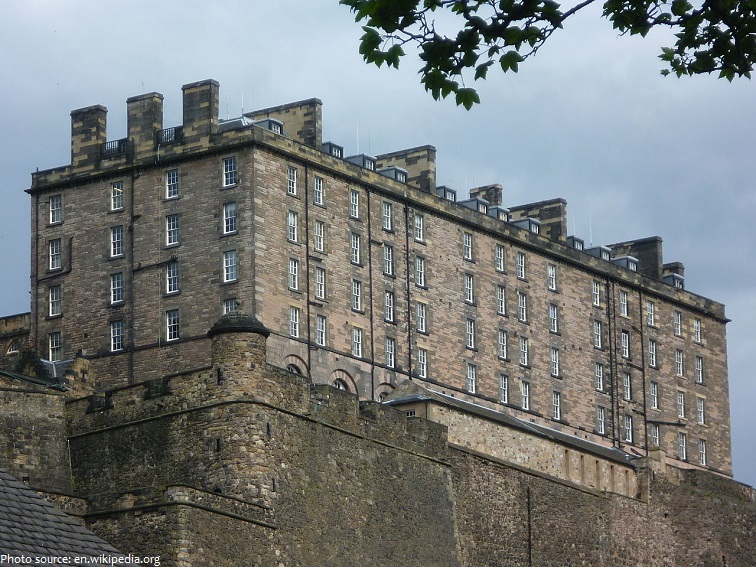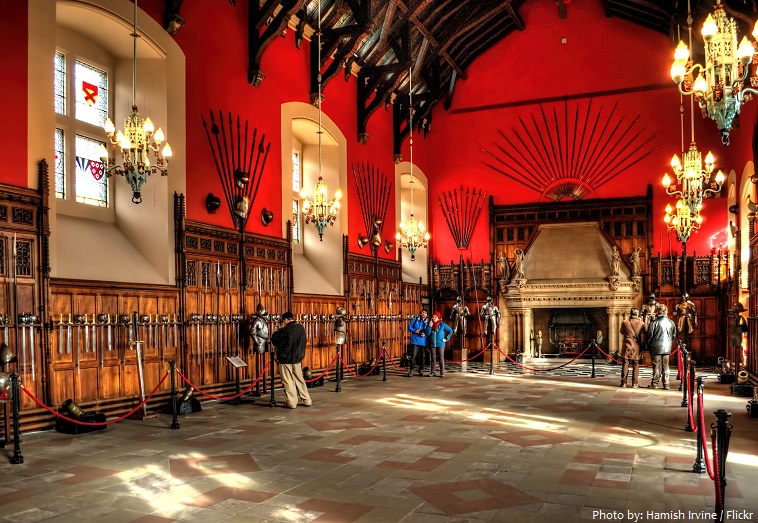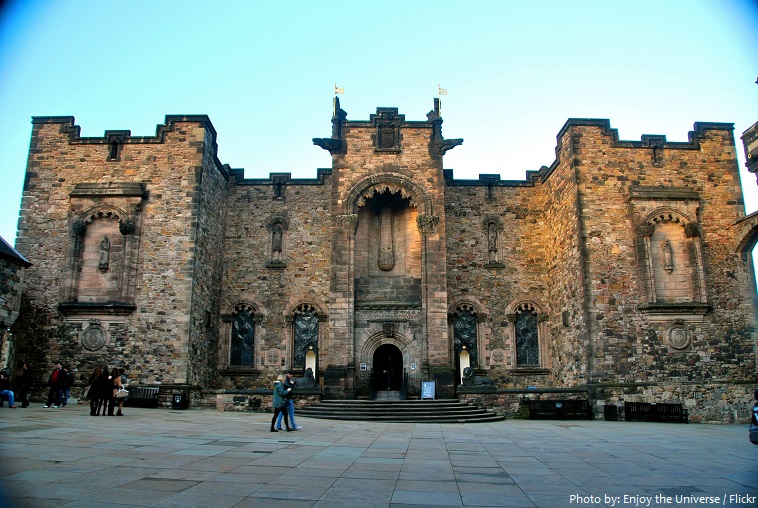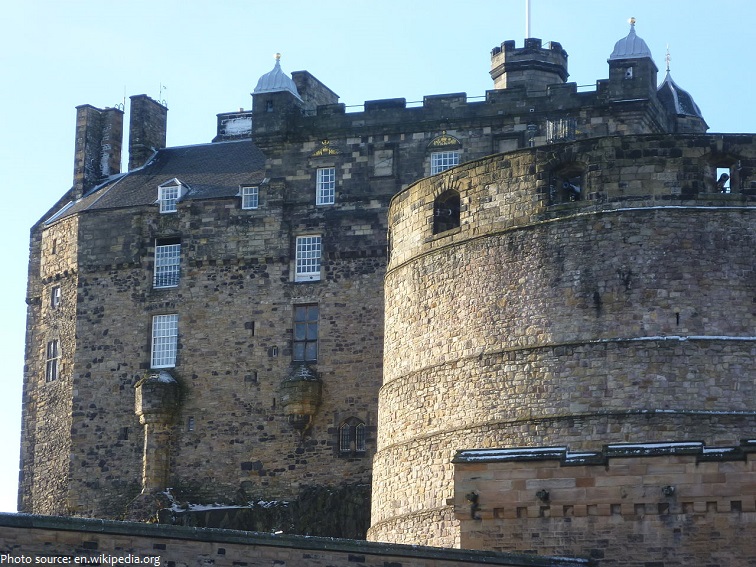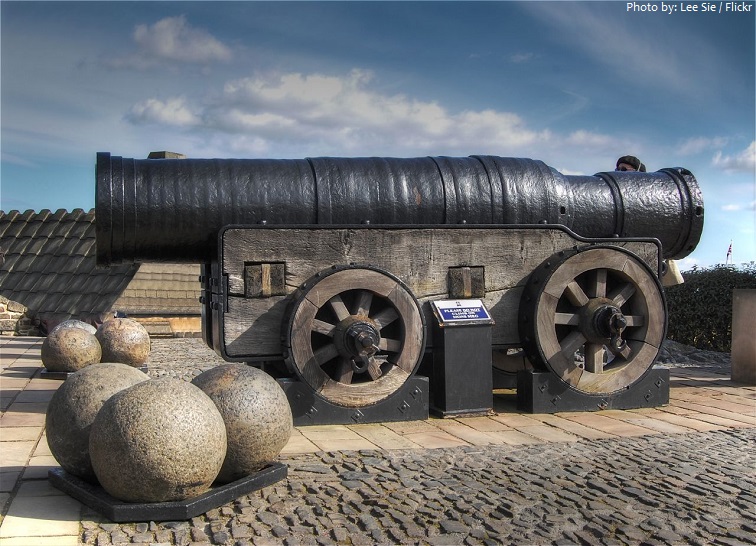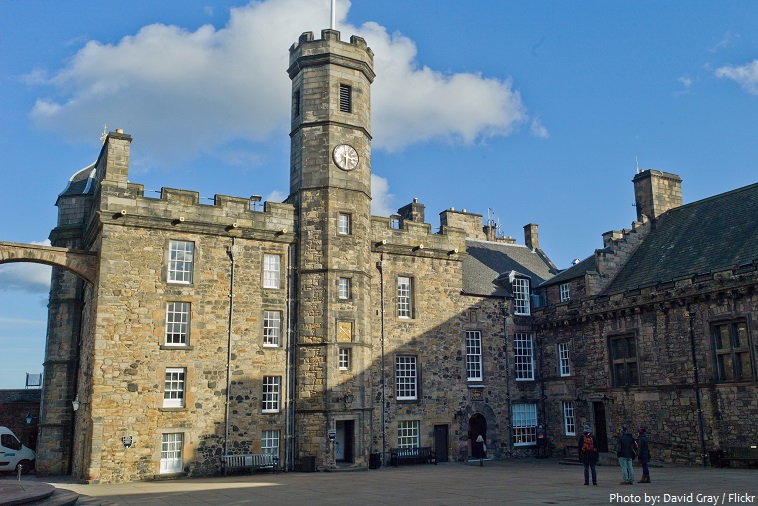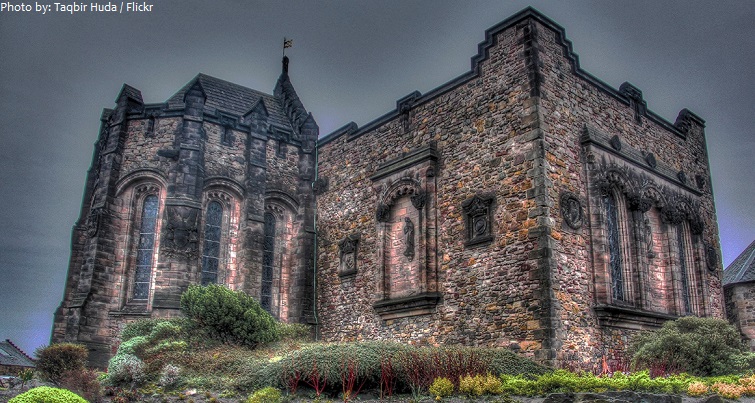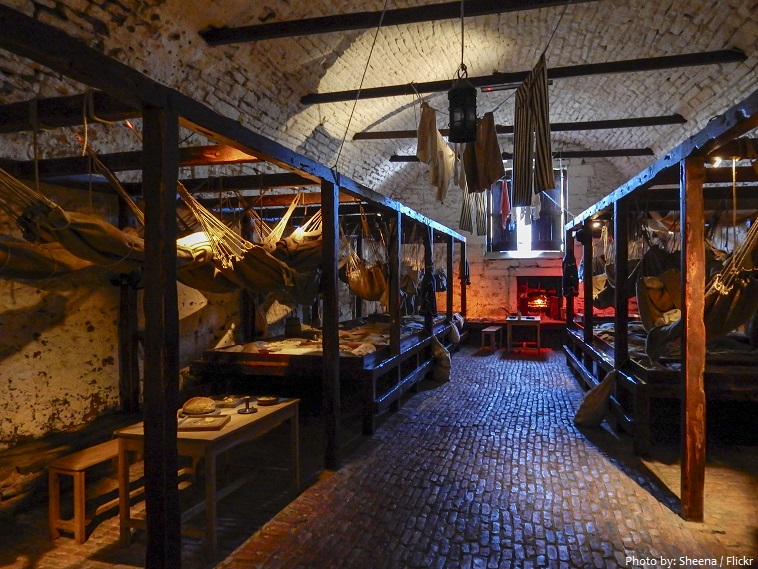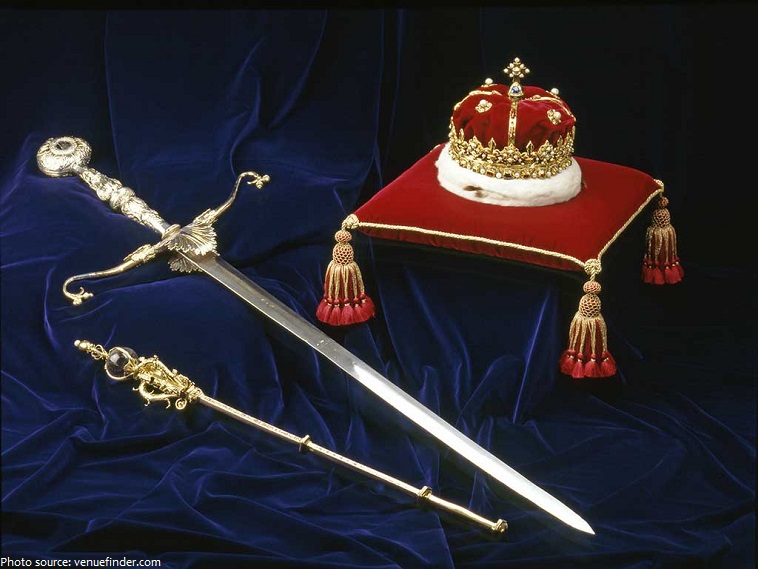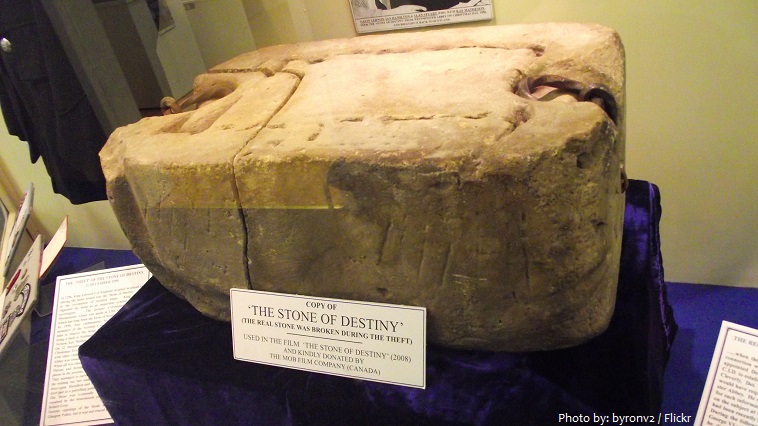Edinburgh Castle is a historic fortress which dominates the skyline of the city of Edinburgh, Scotland from its position on the Castle Rock.
The Castle Rock is estimated to have formed some 350 million years ago.
The volcanic Castle Rock offers a naturally defended position. The summit of the castle rock is 130 meters (430 feet) above sea level and has rocky cliffs on the south, west and north, rearing up to 80 meters (260 feet) from the surrounding landscape.
People have lived on Castle Rock since at least the Iron Age (2nd century AD), and there has been a royal castle on the site since at least the 12th century.
Through the ages the castle has been used as a royal residence, a prison, and an army garrison.
It is the most important castle in Scotland and has been at the center of numerous wars, having been attacked and besieged many times.
From 12th century, it remained a royal residence until 1633 when Charles I became the last Scottish monarch to inhabit the castle.
From the 15th century the castle’s residential role declined, and by the 17th century it was principally used as military barracks with a large garrison.
The castle was used as a prison in the 18th century and early 19th century.
Its importance as a part of Scotland’s national heritage was recognised increasingly from the early 19th century onwards, and various restoration programmes have been carried out over the past century and a half.
Today, most of the buildings of Edinburgh Castle date from the 12th century to the 18th Century.
Built on the ruined 14th Century Constable’s Tower, the Portcullis gate acted as a formidible obsticle to any would-be attackers. It has two heavy outer doors, the portcullis itself and another heavy inner door.
The New Barracks were completed in 1799 and provided accommodation for 600 soldiers. At that time virtually all the old buildings in the castle had been adapted to military use. The New Barracks now house the Regimental Headquarters of the Royal Regiment of Scotland and the Regimental Headquarters and Museum of the Royal Scots Dragoon Guards (Carabiniers and Greys).
The Great Hall was built before the death of King James IV in 1513. It served as the main hall for state assembly in the castle. With the building of the New Barracks 1796-9, the Great Hall was converted into a hospital until 1887.
The Scottish National War Museum is housed in a former storehouse for ordnance. It was built in the 1700s and later used as a military hospital. This museum contains a wealth of absorbing material that ranges from letters home from foreign campaigns to Highland broadswords and chemical warfare suits.
The Half Moon Battery, which remains a prominent feature on the east side of the castle, was erected between 1573 and 1588. It is an impressive part of the castle’s defenses, giving the cannons a wide angel of fire behind a tall, sloping unsurmountable walls.
St Margaret’s Chapel is the oldest building on the site and also the oldest building in all of Scotland. It was constructed in the early 12th century in memory of Queen Margaret.
The 15th-century siege gun or bombard known as Mons Meg is displayed on a terrace in front of St. Margaret’s Chapel. Capable of blasting a 150 kgilograms gunstone for 3.2 kilometers (2 miles) Mons Meg was at the cutting edge of military technology.
Crown Square, also known as Palace Yard, was laid out in the 15th century, during the reign of King James III, as the principal courtyard of the castle. The square is formed by the Royal Palace to the east, the Great Hall to the south, the Queen Anne Building to the west, and the National War Memorial to the north.
On the eastern side of the square is the Royal Palace , built during the 15th and 16th centuries. The Palace was the official royal residence of the later Stewart kings and queens. For kings and queens the palace was a richly decorated and furnished place of comfort.
The Scottish National War Memorial occupies a converted barrack block on the north side of Crown Square. This building was opened on 14th July 1927 as a memorial to the Scottish dead of the 1st World War 1914-18 by the Prince of Wales (later King Edward VIII). The building also commemorates the men who fell in the Second World War 1939-45.
The Prisons of War Exhibition is located in the Edinburgh Castle’s dungeons. It offers a glimpse of life for the prisoners of many nationalities who languished here. They came from as far apart as France, America, Spain, the Netherlands, Ireland, Italy, Denmark and Poland.
The crown jewels of Scotland are a breathtaking sight. Known as The Honours of Scotland they are displayed in the Crown Room and are surrounded by a special exhibition.
The ‘Stone of Destiny’ or ‘Stone of Scone’ is kept at the castle with the crown jewels of Scotland. The stone is the traditional coronation stone of all Scottish and English Kings and Queens and has been much fought over by England and Scotland over the ages. As legend has it, the real stone was swapped for a fake either in the 13th century or the 1950’s, and to this day the authentic stone is still secretly hidden.
The castle, in the care of Historic Scotland, is Scotland’s most-visited paid tourist attraction, with over 1.5 million visitors in 2015.
The castle offers a spectacular view of Edinburgh city and the surrounding area.
The famous event of the Edinburgh Military Tattoo takes place every August in front of the Castle on the grand esplanade at nighttime. This fantastic atmospheric spectacle is attended by thousands and is televised around the world.
The One O’Clock Gun is a time signal, fired every day at precisely 13:00, excepting Sunday, Good Friday and Christmas Day. The ‘Time Gun’ was established in 1861 as a time signal for ships in the harbour of Leith and the Firth of Forth, 3 kilometers (1.8 miles) away.
Edinburgh Castle is reputed to be one of the most haunted spots in Scotland. The most famous ghost of the castle is Lone Piper.

